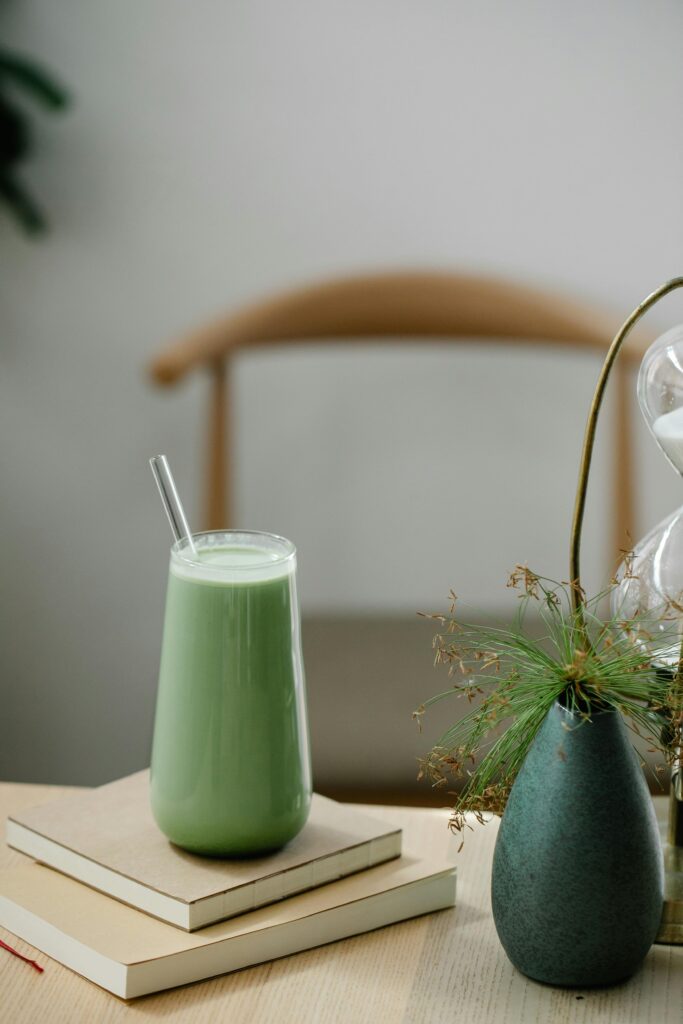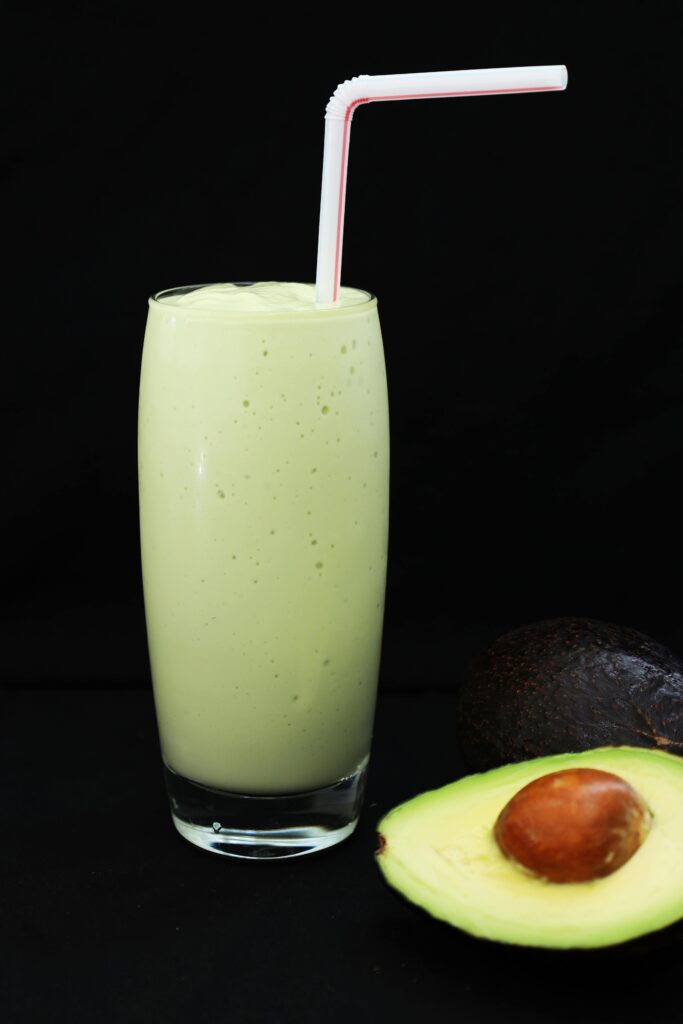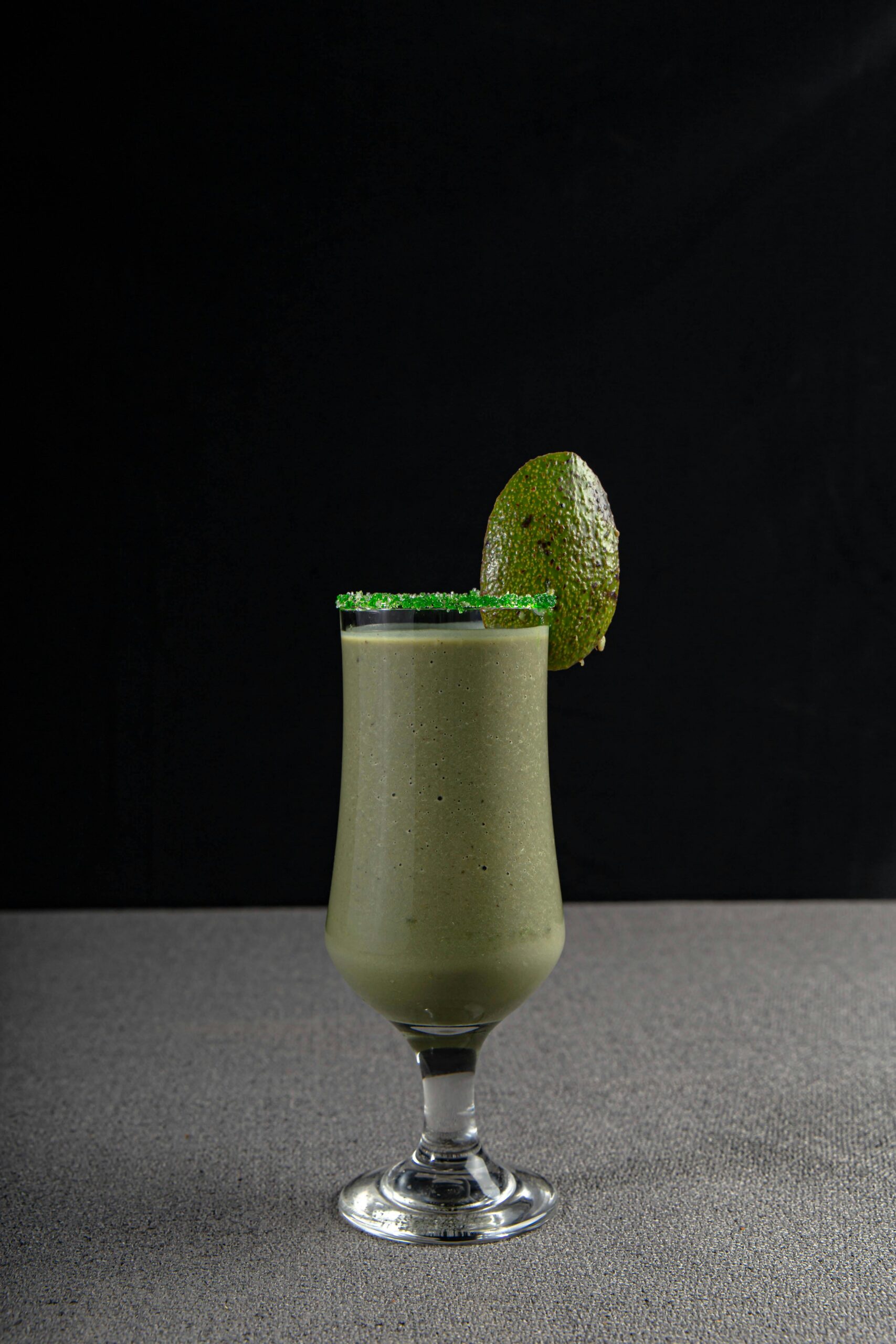Introduction:
This is a paragraph.
Did you know that people who regularly consume avocados are, on average, 7.5 pounds lighter than non-avocado eaters? I was shocked when I discovered this research from the National Health and Nutrition Examination Survey! While many fear the high fat content of avocados, I’m here to show you why an avocado smoothie might be your secret weapon for weight loss. Let’s dive into the creamy, satisfying world of avocado smoothies and learn how they can actually accelerate your weight loss goals!
Nutritional Benefits of Avocado Smoothies
Adding half an avocado to your smoothie provides 15g of heart-healthy monounsaturated fats – the same kind found in olive oil. These fats actually support weight loss by triggering hormones that signal fullness and reduce inflammation.
The fiber content is impressive: 7g per half avocado, combining both soluble and insoluble fiber. This fiber-fat combination keeps blood sugar stable for 4-6 hours after drinking, preventing energy crashes and cravings.
Key nutrients in a basic avocado smoothie (1 serving):
– Potassium: 485mg (14% DV)
– Vitamin K: 21mcg (18% DV)
– Folate: 81mcg (20% DV)
– Vitamin C: 10mg (11% DV)
– Vitamin E: 2.1mg (14% DV)
– Magnesium: 29mg (7% DV)
The impact on metabolism is significant. Research shows avocados can:
– Increase metabolic rate by 4-7%
– Improve nutrient absorption by 400% (especially fat-soluble vitamins)
– Reduce insulin spikes by 30% compared to fruit-only smoothies
– Support sustained energy release over 4-6 hours
Comparing smoothie bases (per 1 cup serving):
Avocado Smoothie:
– Calories: 230
– Protein: 4g
– Healthy fats: 15g
– Fiber: 7g
– Sugar: 1g
Banana Smoothie:
– Calories: 200
– Protein: 1g
– Fat: 0.5g
– Fiber: 3g
– Sugar: 28g
Berry Smoothie:
– Calories: 95
– Protein: 1g
– Fat: 0.5g
– Fiber: 4g
– Sugar: 15g
The healthy fats in avocado smoothies have a unique benefit: they enhance absorption of fat-soluble vitamins (A, D, E, K) from other smoothie ingredients by 2-4 times. This means you get more nutritional value from everything else in your glass.
For blood sugar management, avocado smoothies have a glycemic index of 15, compared to 50 for banana smoothies and 35 for berry smoothies. This low glycemic impact makes them ideal for sustained energy and weight management.

Perfect Avocado Smoothie Formula
Base Formula (300 calories):
– 1/2 medium avocado (100 calories)
– 1 cup liquid base (0-40 calories)
– 1 scoop protein (100-120 calories)
– 1 cup greens (10 calories)
– Optional sweetener (0-15 calories)
– Ice for texture
Best Liquid Bases (1 cup):
1. Unsweetened almond milk (30 cal)
2. Green tea (0 cal)
3. Coconut water (45 cal)
4. Plain water (0 cal)
Avoid:
– Fruit juices (120+ cal)
– Sweetened milk alternatives (100+ cal)
– Regular milk (150 cal)
Protein Options (20-25g protein):
1. Whey isolate (110 cal)
2. Pea protein (120 cal)
3. Hemp protein (115 cal)
4. Collagen peptides (90 cal)
Natural Sweeteners (per serving):
– Monk fruit extract (0 cal) – 1/4 tsp
– Stevia (0 cal) – 3-4 drops
– Raw honey (60 cal) – 1 tsp maximum
– Dates (60 cal) – 1 small date
Fat-Burning Enhancers (measurements per smoothie):
1. Cinnamon (1/2 tsp) – increases metabolism 20%
2. Matcha powder (1 tsp) – boosts fat oxidation 17%
3. Cayenne (1/8 tsp) – raises metabolism 8%
4. MCT oil (1 tsp) – increases energy expenditure 12%
5. Ginger (1/2 tsp) – improves thermogenesis 10%
Optimal Timing:
– Pre-workout: 2 hours before
– Post-workout: Within 30 minutes
– Meal replacement: Add extra protein (+10g)
– Breakfast: Include metabolism boosters
– Afternoon snack: Add fiber-rich greens
Temperature Tips:
– Use frozen avocado chunks for thickness
– Add ice last for texture control
– Serve immediately for best nutrient retention
– Keep below 40°F for maximum satiety effect
Common Mistakes to Avoid
One thing I’ve learned after years of helping people with their nutrition goals is that small mistakes can really throw you off track. I remember watching one of my longtime clients get super frustrated because she wasn’t seeing results, despite following what she thought was a perfect meal plan. Let me tell you, it wasn’t until we sat down and really dug into her daily habits that we discovered some sneaky issues that were sabotaging her progress.
First up, let’s talk about portion sizes, because boy, did this one trip me up when I first started teaching nutrition. You know those restaurant-sized portions we’ve all gotten used to? They’re usually way bigger than what we actually need. I had this eye-opening moment when I actually measured out a “serving” of pasta – turns out what I thought was one portion was closer to three! A kitchen scale changed everything for me, and now I tell all my students to grab one. For reference, a serving of cooked pasta should be about 1 cup (or 2 ounces dry), not the mountain we’re used to seeing.
Here’s something that really gets me fired up: hidden sugars in “healthy” foods. I totally fell for this one myself. Those granola bars I used to grab thinking they were a healthy snack? Some of them had more sugar than a candy bar! No joke – I’ve seen supposedly healthy breakfast bars with 15-20 grams of sugar per serving. Instead, I’ve learned to look for options with less than 5 grams of sugar per serving, or better yet, make my own with ingredients like oats, nuts, and a touch of honey.
Timing mistakes? Oh man, I’ve seen these mess up even the most dedicated people. One of my biggest facepalm moments was realizing I’d been telling people to eat right after their workouts, but not specifying what to eat. The body needs both protein and carbs within that 30-minute window after exercise for optimal recovery. We’re talking about 20-30 grams of protein and about 40-60 grams of carbs, depending on the intensity of your workout.
And don’t even get me started on storage mistakes! You wouldn’t believe how many nutrients get lost through improper storage. I learned this the hard way when all my carefully prepped veggies turned into a soggy mess by Wednesday. Pro tip: store your cut vegetables in airtight containers with a paper towel to absorb excess moisture. And here’s something most people don’t know – tomatoes and bananas should never go in the fridge! The cold temperature actually breaks down their cell walls and ruins both the texture and nutritional content.
One mistake that really bugs me is when people prep their salads with dressing already mixed in for the whole week. Trust me, by day three, you’ve got a wilted, unappetizing mess. Instead, store your dressings separately in small containers or mason jars. This way, your greens stay crisp and fresh all week long. Speaking of dressings, measure them out! A serving is usually 2 tablespoons, but it’s super easy to pour way more than that.
Remember that time I thought I was being all healthy by making huge batches of smoothies for the week? Yeah, that was a disaster. The separation was weird, the texture got funky, and a lot of the nutrients had degraded. Now I know better – prep and store smoothie ingredients in individual freezer bags, then blend fresh each morning. Takes just five minutes and the difference in taste and nutrition is totally worth it.
Listen, we’re all gonna make mistakes on our health journey. The key is learning from them and making those small adjustments that add up to big changes. Start by tackling one of these areas at a time – maybe focus on portion sizes this week, then move on to sugar content next week. Baby steps, right?
Strategic Timing for Maximum Benefits
Let me tell you about my journey figuring out the best timing for avocado smoothies – because timing really can make or break your results. After years of experimenting with different schedules (and dealing with some seriously hangry moments), I’ve learned exactly when these nutrient-packed drinks work best for different goals.
Morning has honestly become my favorite time for an avocado smoothie. Here’s why: your body absorbs nutrients better in the morning when your digestive system is fresh and ready to go. I discovered this works especially well between 7-9 AM, about 30-45 minutes after waking up. The healthy fats from the avocado combined with your other ingredients give you sustained energy that actually lasts through those morning meetings.
Now, let’s talk about workout nutrition because this is where I see people mess up all the time. If you’re having your smoothie pre-workout, aim for about 2 hours before exercise. I learned this timing sweet spot the hard way – too close to workout time and you might feel that smoothie sloshing around (not fun during burpees, trust me). The ideal pre-workout avocado smoothie should be lighter, with about half an avocado, some protein, and easily digestible fruits.
Post-workout is a whole different story. You’ve got this golden window of about 30 minutes after exercise when your body is practically begging for nutrients. Your post-workout avocado smoothie can be more substantial – use a whole avocado, add some protein powder (aim for 20-30 grams), and include carbs to replenish glycogen stores. I’ve found this combo helps significantly with recovery.
For weight loss goals, frequency is super important. When I work with clients on weight management, we usually stick to one avocado smoothie per day, max. Why? Well, even though avocados are incredibly healthy, they’re also calorie-dense. One smoothie made with a whole avocado can easily hit 400-500 calories. The best time for weight loss? I’ve seen the best results when people have their smoothie either as breakfast or as a post-workout meal replacement.
Speaking of meal replacements, let’s get specific about this. Your meal replacement smoothie needs to hit certain nutritional targets to actually work as a meal. We’re talking 400-600 calories, 15-30 grams of protein, healthy fats from your avocado (about 15-20 grams), and enough fiber to keep you satisfied (at least 8 grams). I always tell my students to add some leafy greens and chia seeds to boost the nutrient content.
For those doing intermittent fasting – and I know there’s a lot of confusion here – avocado smoothies can totally work with your eating window. If you’re doing 16/8 fasting (that’s 16 hours fasting, 8 hours eating), try having your smoothie at the start of your eating window. This helps ease your digestive system back into processing food and provides sustained energy. For example, if your eating window is 12 PM to 8 PM, make that smoothie your first meal at noon.
One thing that surprised me was learning how timing affects nutrient absorption. Your body actually absorbs fat-soluble vitamins (like vitamin E and K, which avocados are rich in) better when you have some fat in your system. That’s why I always suggest having your avocado smoothie with or right after a meal if you’re using it as a supplement rather than a meal replacement.
Remember when I thought having an avocado smoothie right before bed was a good idea? Yeah, that was a rookie mistake. While the healthy fats are great, a big smoothie too close to bedtime can disrupt your sleep patterns. If you’re craving one in the evening, try to have it at least 3 hours before bed.
The key thing I’ve learned is that consistency matters more than perfect timing. Find a schedule that works with your lifestyle and stick to it. Your body will thank you for the routine, and you’ll start noticing those benefits way sooner.

Recipes and Variations for Weight Loss
Let me share some game-changing smoothie recipes I’ve developed after years of experimenting with weight loss nutrition. I honestly can’t tell you how many blenders I’ve burned through testing these combinations (RIP to my first NutriBullet), but these recipes are the ones that have consistently worked best for my clients.
Let’s start with my go-to Basic Weight Loss Avocado Smoothie. This is the one I recommend to all my beginners because it’s foolproof and effective. You’ll need: half a medium avocado (about 75g), 1 cup of unsweetened almond milk (30 calories), 1 scoop of vanilla protein powder (20-25g protein), 1 cup of spinach, 1/2 cup of frozen cauliflower (trust me on this one!), and a tiny drizzle of honey (optional). The whole thing comes in at around 250 calories with 20g of protein. The secret here is the frozen cauliflower – it adds crazy creaminess without the extra sugar from frozen bananas.
The Green Avocado Protein Smoothie is my heavy hitter for serious weight loss results. I stumbled upon this combination when I was trying to pack more greens into my diet. Combine: 1/2 avocado, 2 cups of kale, 1 cup of cucumber, 1 scoop of unflavored pea protein, 1 tablespoon of chia seeds, 1 cup of green tea (cooled), and a small green apple. This powerhouse has about 300 calories but delivers 25g of protein and a whopping 12g of fiber. Pro tip: massage your kale first (yes, really!) to break down the tough fibers.
For my low-carb folks, this breakfast smoothie has been a total game-changer. The Low-Carb Avocado Breakfast Smoothie contains: 1 whole small avocado, 1 cup unsweetened coconut milk, 2 tablespoons MCT oil, 1 scoop collagen peptides, 1/4 cup frozen blueberries (just enough for flavor without too many carbs), and a handful of fresh mint. It’s around 400 calories but only 8g net carbs. The MCT oil helps kickstart ketone production if you’re doing keto, and the mint makes it taste surprisingly refreshing.
Now, the Post-Workout Recovery Blend is something I’m particularly proud of. After seeing so many people struggle with proper post-exercise nutrition, I developed this recipe to hit all the right notes. Mix: 1/2 avocado, 1 scoop whey protein isolate, 1 frozen banana (yes, we need the carbs here!), 1 cup coconut water, 1 tablespoon hemp seeds, and a pinch of pink salt. This combination provides the perfect 3:1 carb-to-protein ratio for optimal recovery, plus essential electrolytes.
My favorite Metabolism-Boosting Combination came from studying thermogenic ingredients. Blend together: 1/2 avocado, 1 cup cold green tea, 1 tablespoon grated ginger, 1/4 teaspoon cayenne pepper (adjust to taste), 1 cup spinach, 1/2 frozen pear, and 1 scoop plant-based protein. The combination of green tea and cayenne has been shown to boost metabolic rate by up to 4% – and while that might not sound like much, it adds up over time!
Here’s something crucial I learned the hard way: always add your liquids first, then soft ingredients, and finally frozen items. This prevents that annoying air pocket that forms around the blade. And please, don’t skip the greens in these recipes – they’re not just for color! Those leafy greens provide important minerals that support your metabolism.
For anyone worried about keeping avocados fresh (because who hasn’t thrown away an overripe avocado?), here’s a tip that saved me tons of money: buy them firm, store in the fridge once ripe, and only take out what you need. You can even freeze avocado chunks for smoothies – just toss them in lemon juice first to prevent browning.
Remember, the key to making these smoothies work for weight loss is consistency and portion control. Even healthy ingredients can stall your progress if you’re heavy-handed with portions. I always tell my students to measure ingredients for at least two weeks until they can eyeball portions accurately.
Conclusion:
Avocado smoothies can be a game-changer in your weight loss journey when prepared correctly. Their unique combination of healthy fats, fiber, and nutrients makes them an ideal choice for sustainable weight management. Start with our basic recipe and experiment with additions based on your goals. Remember – the key to success lies in proper portions and timing. Ready to blend your way to better health?
